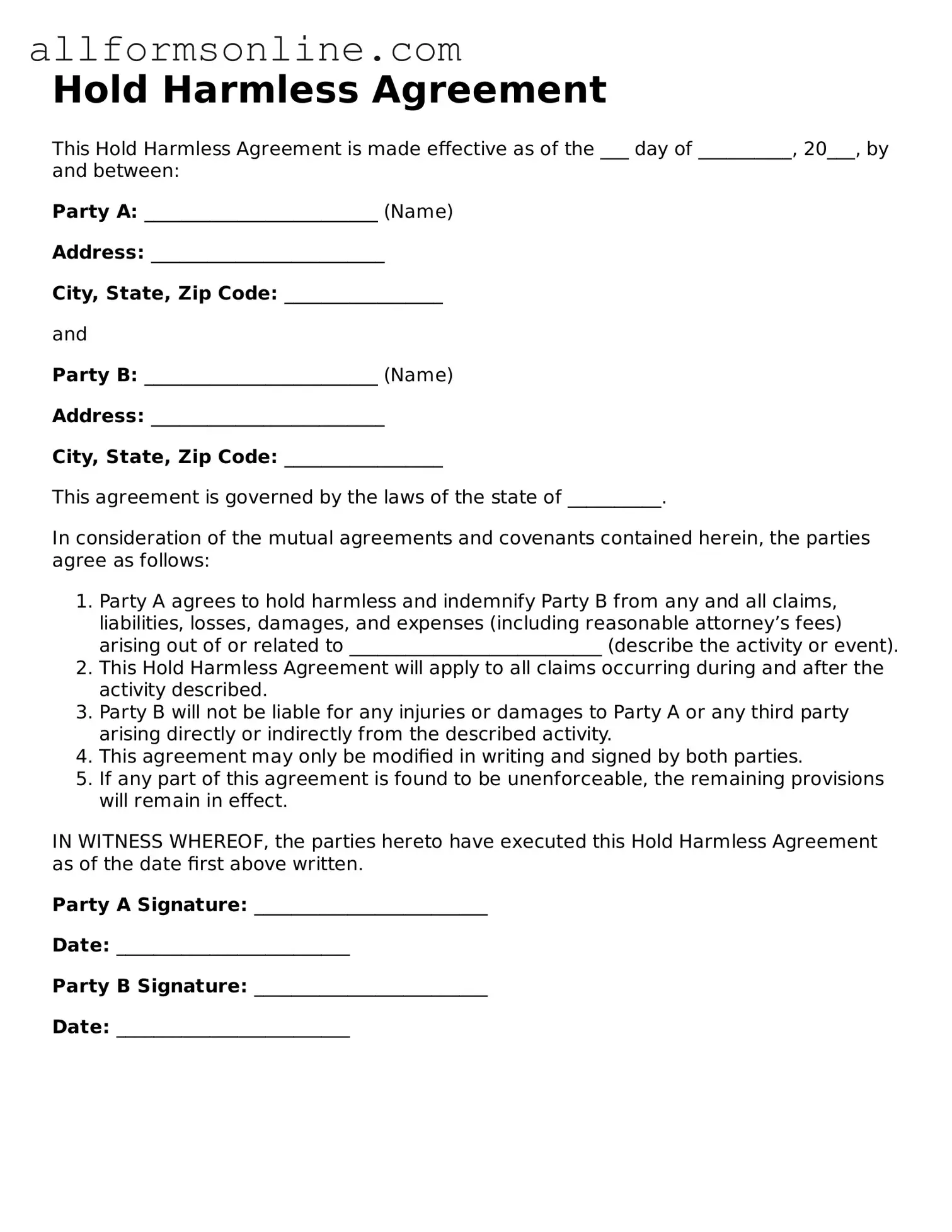What is a Hold Harmless Agreement?
A Hold Harmless Agreement is a legal document designed to protect one party from liability for any injuries or damages that may occur during a specific event or activity. Essentially, it transfers the risk from one party to another. This type of agreement is commonly used in various situations, including events, construction projects, and recreational activities, where there is a potential for accidents or unforeseen incidents. By signing this agreement, the parties involved acknowledge the risks and agree to assume responsibility for any claims that may arise.
Who typically uses a Hold Harmless Agreement?
Hold Harmless Agreements are often used by businesses, organizations, and individuals. For example, event organizers may require vendors or participants to sign this agreement to mitigate liability during an event. Similarly, property owners may ask contractors to sign a Hold Harmless Agreement before beginning work on their premises. This helps ensure that if an accident occurs, the property owner is not held responsible for injuries or damages that happen as a result of the contractor's work.
What are the key components of a Hold Harmless Agreement?
A typical Hold Harmless Agreement includes several essential elements. First, it identifies the parties involved, specifying who is being held harmless and who is assuming the risk. Second, it outlines the scope of the agreement, detailing the activities or events covered. Additionally, the agreement may include clauses that specify any limitations on liability or exceptions to the hold harmless provision. Finally, it often requires signatures from both parties, indicating their understanding and acceptance of the terms.
Are Hold Harmless Agreements enforceable?
In general, Hold Harmless Agreements are enforceable in the United States, provided they meet certain legal criteria. Courts typically uphold these agreements if they are clear, specific, and entered into voluntarily by both parties. However, there are limitations. For instance, some jurisdictions may not allow a Hold Harmless Agreement to protect a party from liability for gross negligence or intentional misconduct. It is essential to consider the laws in your state and consult with a legal professional if there are concerns about enforceability.
Can a Hold Harmless Agreement be modified after it is signed?
Yes, a Hold Harmless Agreement can be modified after it is signed, but both parties must agree to the changes. Modifications should be documented in writing and signed by both parties to ensure clarity and enforceability. This may include adding new activities, changing the scope of liability, or updating any relevant terms. It is important to approach modifications carefully, as they can impact the original intent of the agreement.
What should I consider before signing a Hold Harmless Agreement?
Before signing a Hold Harmless Agreement, it is crucial to carefully read and understand the terms. Consider the risks associated with the activity or event and assess whether you are comfortable assuming those risks. Additionally, evaluate the potential financial implications should an incident occur. If there are any uncertainties or concerns, it may be beneficial to consult with a legal professional who can provide guidance tailored to your specific situation. Understanding your rights and responsibilities will help you make an informed decision.
